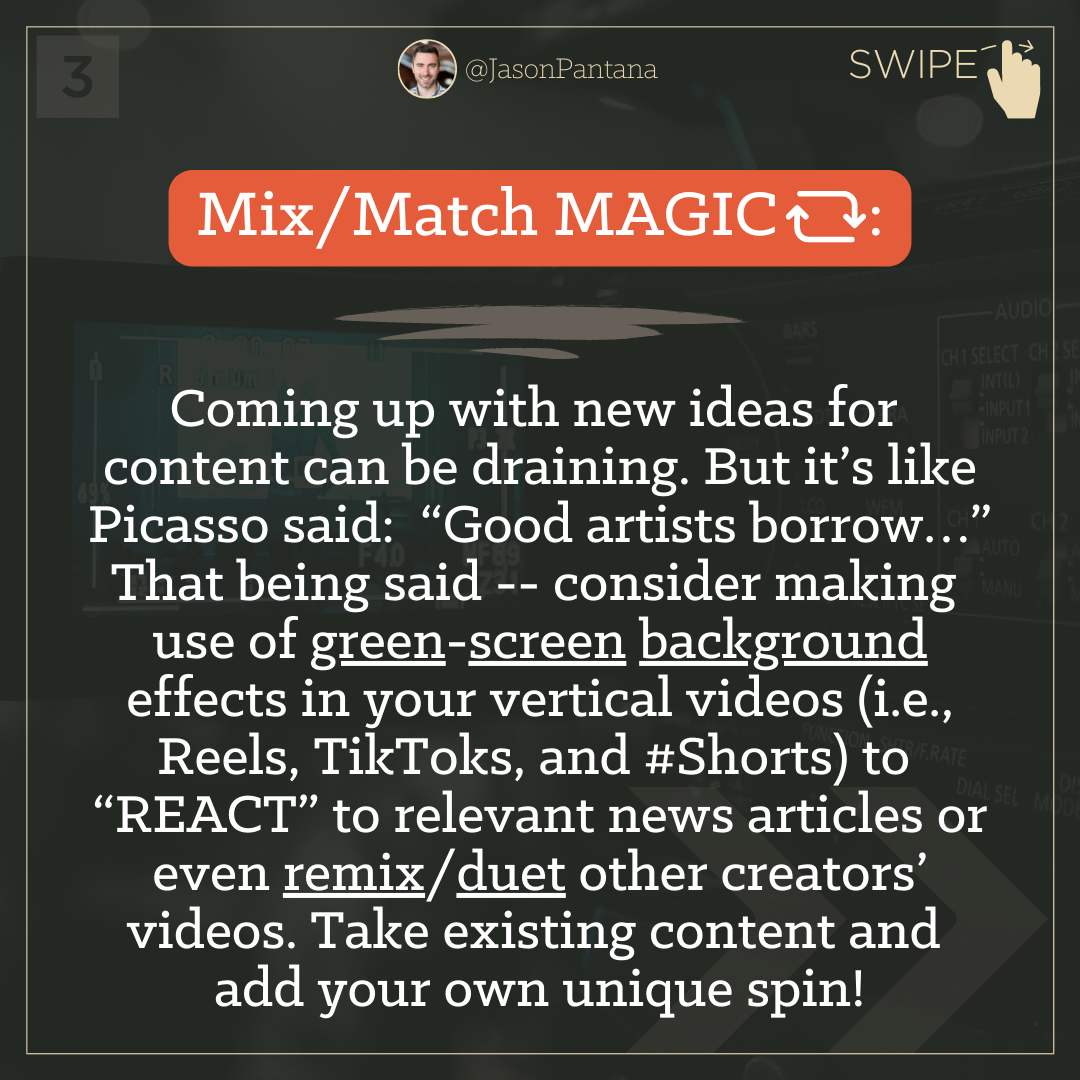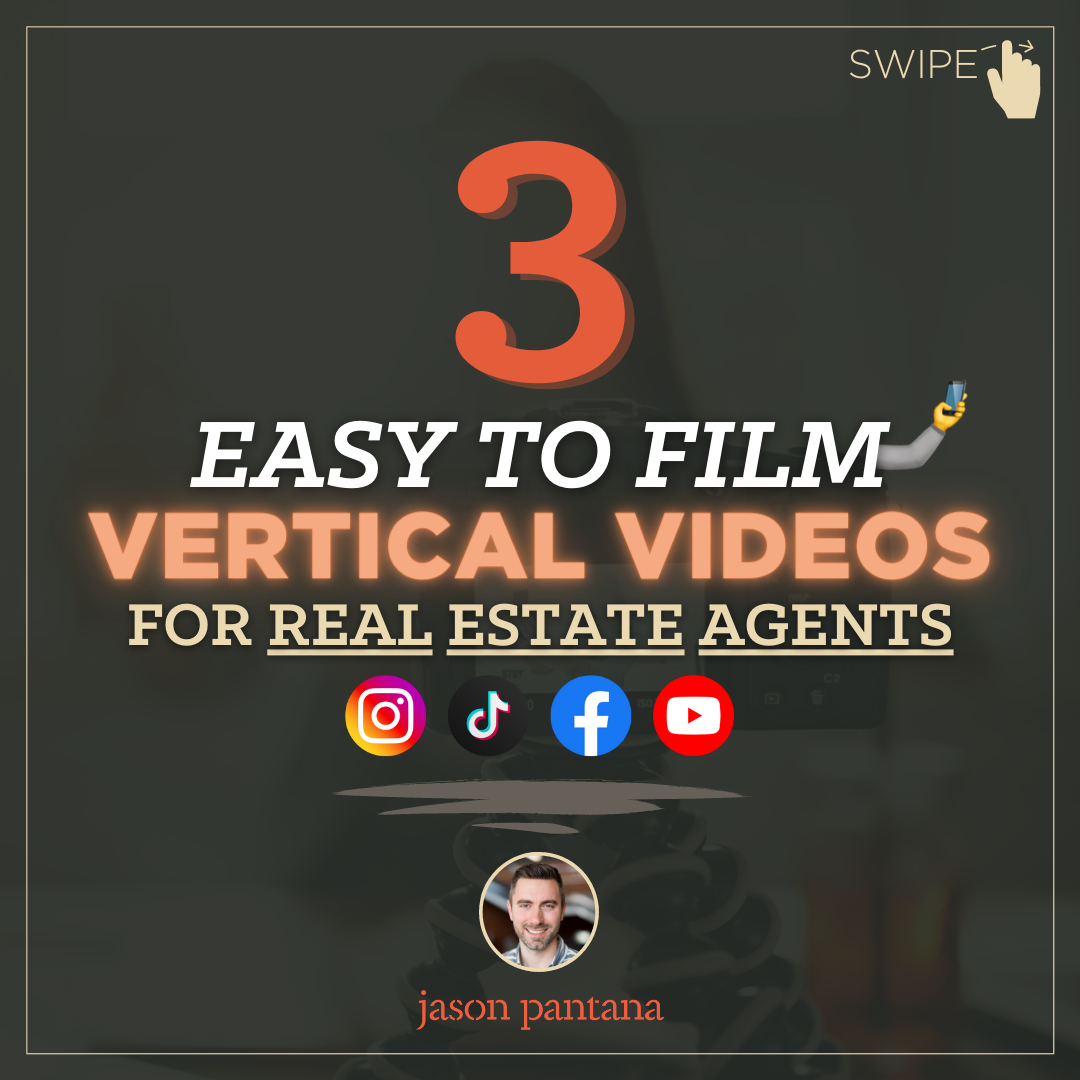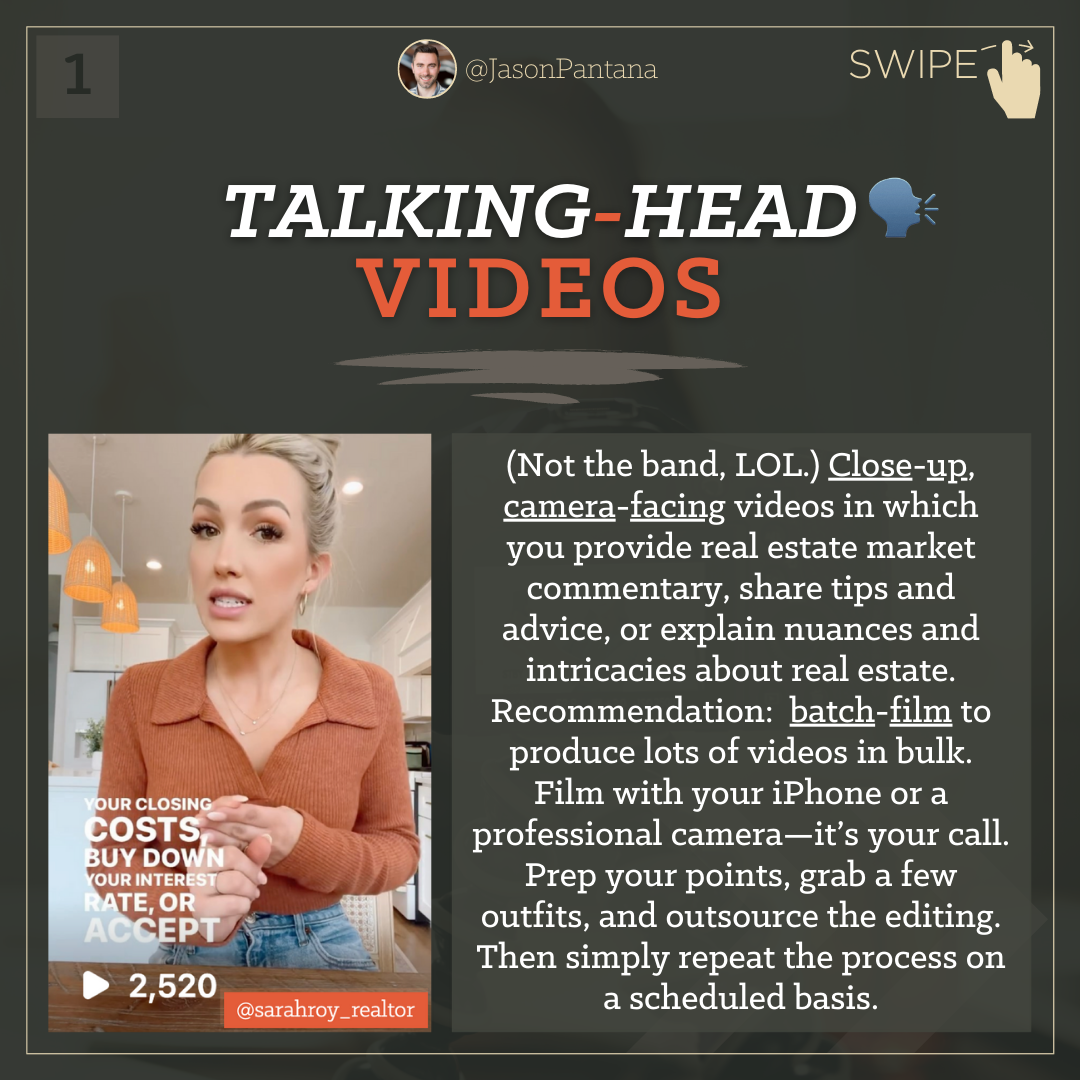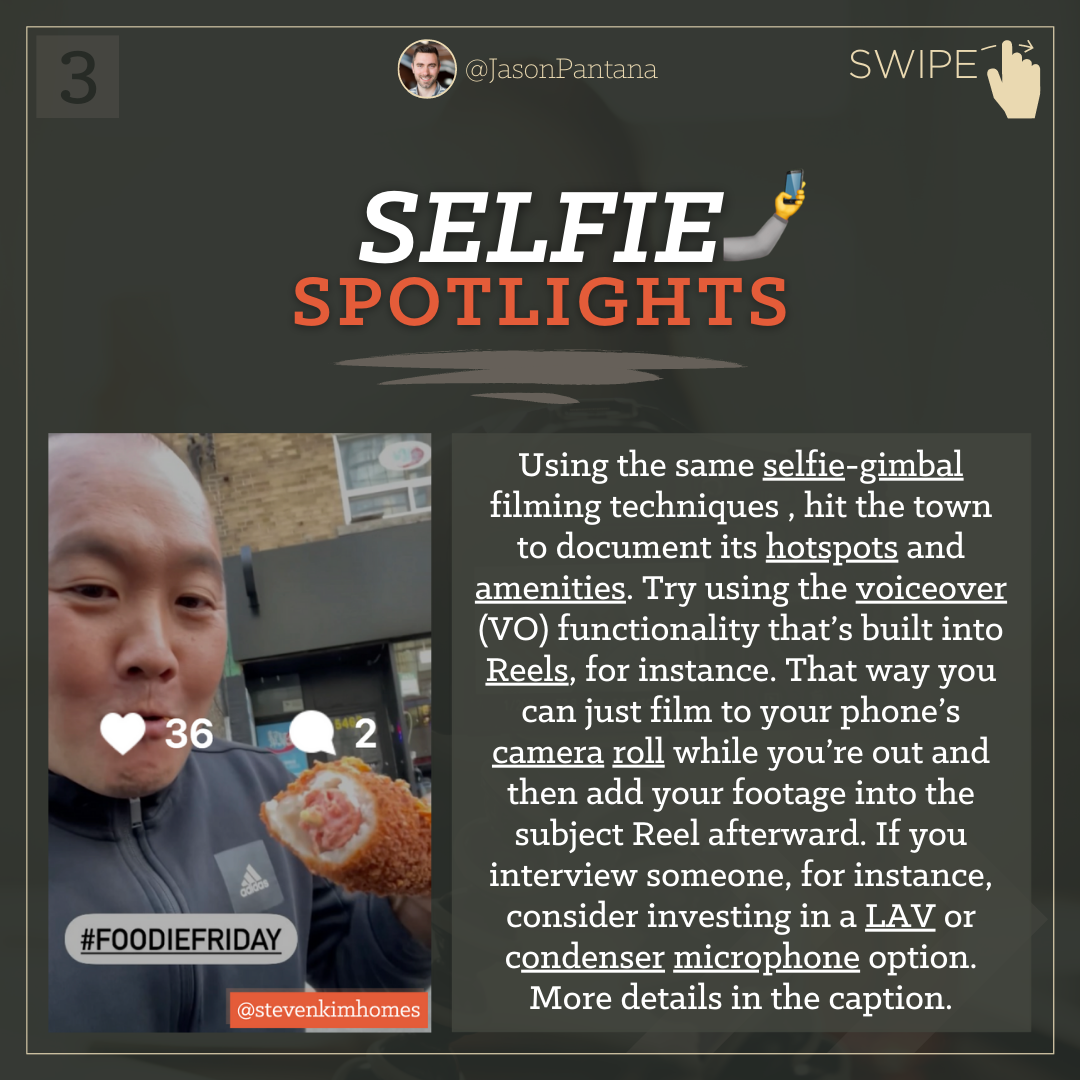Video Production Hacks: 3 Quick and Easy Ways to Create More Content with Less Effort
Social media platforms like Instagram and others constantly demand new content, especially in the form of video. But creating a large volume of video content can be overwhelming and lead to burnout. If you want to keep up and avoid getting left behind, you need to level up your video process and find ways to create more content with less effort. That being said, here are three quick-and-easy ideas to help you do just that.
BATCHING: Filming one video at a time is inefficient. My advice: record in bulk! -- it’ll help you stay in the flow of content creation, ultimately leading to higher-quality videos. Some creators prep scripts and read the teleprompter whereas others simply tap record and riff to various topics. It all gets cleaned up in post-production. So whatever’s your MO, get in the zone and let the process guide you.
2. CHOPPING: Don’t let your long-form videos go to waste. Repurpose podcast and/or webinar content, for instance, into bite-sized, vertical clips and post ‘em as Reels, TikToks, and Youtube Shorts. Use the “chops” to drive top-of-funnel viewership to your full episodes. Lots of creators hire freelance editors to (low-cost) slice-and-dice all-the-day long. You’ve probably got A LOT more content than you think!
3. SAMPLING: Coming up with new ideas for content can be draining. But it’s like Picasso said: “Good artists borrow…” That being said -- consider making use of green-screen background effects in your vertical videos (i.e., Reels, TikToks, and YouTube Shorts) to “REACT” to relevant news articles or even remix/duet other creators’ videos. Take existing content and add your own unique spin! (Obviously, go about this collaboratively—as intended by the platforms—not unethically.)
To get the biggest return from your social media and content marketing efforts, it’s important to streamline your video creation process—that is, to make more videos in less time without sacrificing quality. Batching allows you to get into a flow state and produce higher-quality videos by recording multiple videos at once. Chopping enables you to repurpose your long-form content into bite-sized clips, which can drive traffic to your full episodes. Reacting lets you take existing content and add your own unique spin to it, creating something new and engaging.











